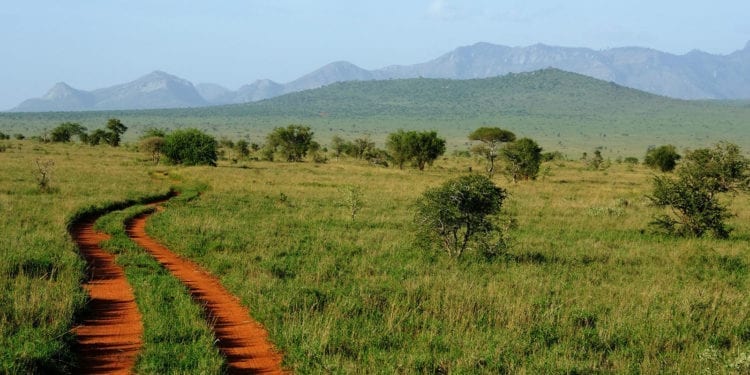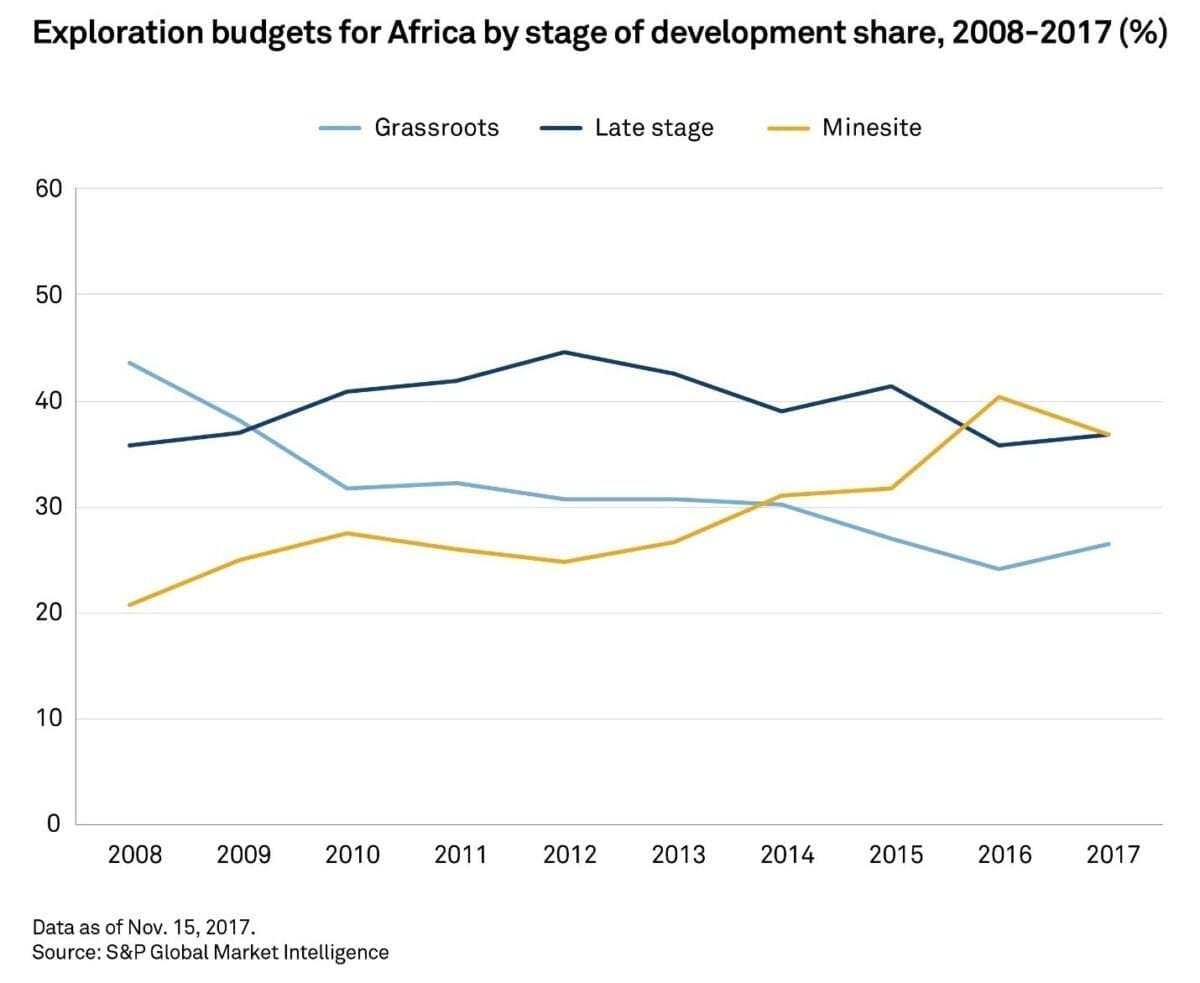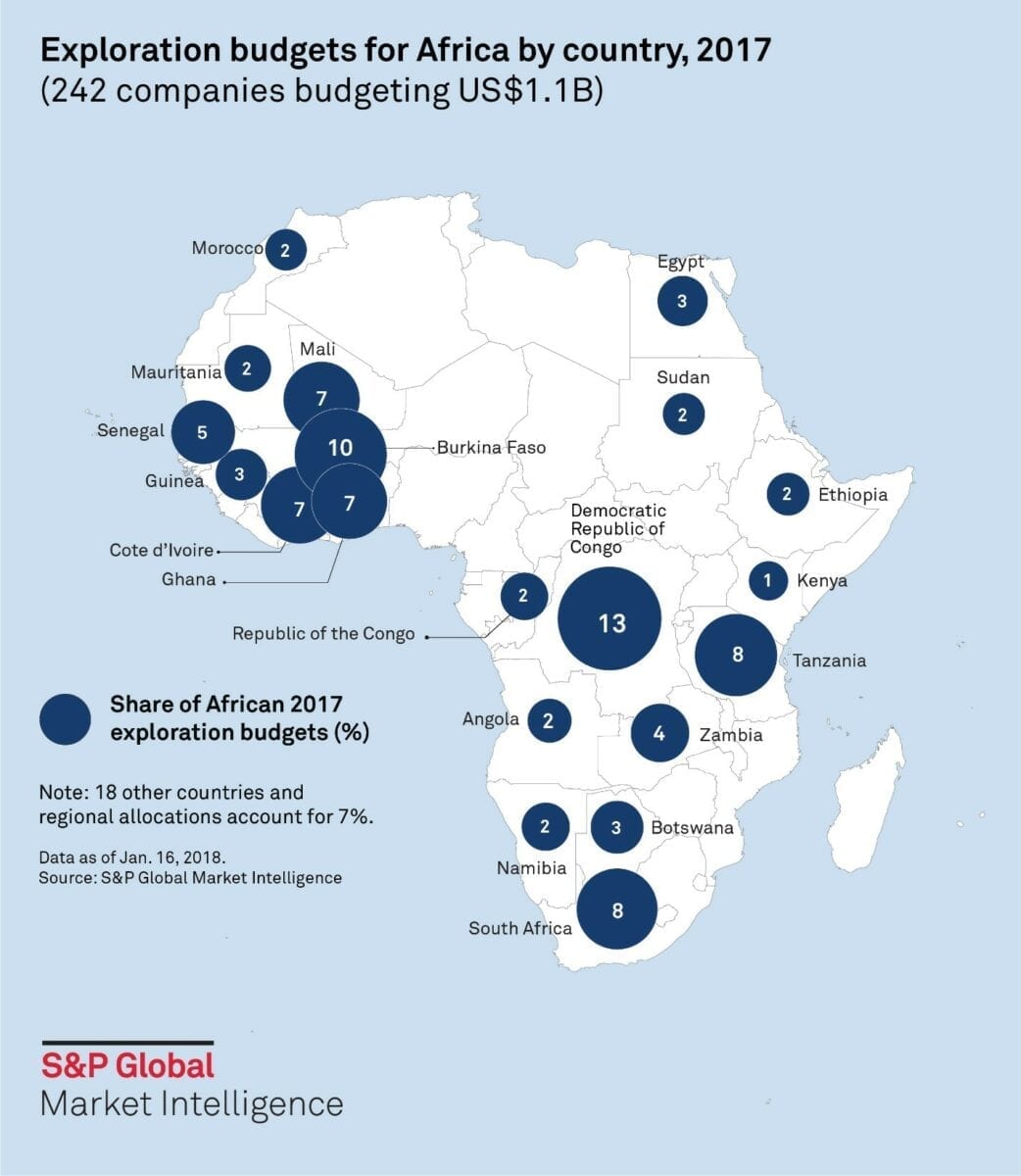Explorers in Africa ramped up their efforts in 2017 after four years of declining spending. Mining companies allocated almost US$1.1 billion to the Africa region for nonferrous metals exploration — an increase of almost 18% over the US$924 million budgeted in 2016, compared with a 14% increase in the global budget total. In addition, the region’s share of the global budget was up by almost 3% year over year to just under 14%, ranking it more or less equally with Canada and Australia.
Data gathered for S&P Global Market Intelligence’s Corporate Exploration Strategies series indicates that although the number of companies exploring in Africa declined by almost 8% to 242 in 2017, more than 45 companies inactive in 2016 planned to explore in 2017, and 100 companies planned to increase spending above their 2016 plans. Preliminary analysis of the industry’s 2017 fundraising for all purposes in Africa suggests that companies will have sufficient cash on hand to maintain or increase their exploration efforts in the region in 2018.
Gold’s share of spending is up
Gold, base metals and our “other targets” category remained Africa’s top exploration targets year over year. Although the region’s gold budgets declined between 2012 and 2016, they followed the global trend of resurgence in 2017, rising by 39% to almost US$660 million — almost 61% of the region’s all-metals budget. Allocations for second-place base metals declined for the fifth consecutive year, by 11% to about US$185 million. Exploration budgets for other targets increased by 58% to US$142 million and focused mainly on potash, graphite and mineral sands. The remaining African targets — diamonds, uranium and platinum group metals — also saw their budgets decline year over year.
Majors and juniors increase spending
Since taking over the top spot in 2015, major companies continued to increase their share of Africa’s exploration budget in 2017, contributing just over half of the total; their US$554 million allocation represented a 28% increase over 2016. Second-place juniors, which had the largest increase at 36%, budgeted almost US$330 million, representing 30% of the regional total. Allocations by intermediate companies and by governments and other company types continued to slip; budget declines of 15% and 25%, respectively, lowered their regional contributions to 15% and 4%.
Grassroots spending up 30%
Late-stage and minesite budgets for Africa were almost equal at about US$400 million. Looking at the 10-year history, minesite budgets occupied last place annually, in dollar terms, until they overtook grassroots in 2014 and then surpassed late-stage in 2016 to take the top spot that year. In 2017, the minesite and late-stage shares were on par at just below 37%. Although grassroots exploration remained lowest in allocations, with almost US$289 million, its budget was up by 30% over 2016.
The Democratic Republic of the Congo
The Democratic Republic of the Congo, or DRC, held on to first place regionally in 2017 with a 13% share, despite a 6% year-over-year reduction in its exploration allocations to US$143 million. Some new players began exploring in the country, lifting the number of companies to 30 from 27 in 2016.
Mining companies working in DRC enjoy an exemption from a value-added tax, or VAT, that lapsed in 2017 but was provisionally reinstated the same year. Major companies had expressed how their operations would be adversely affected if the VAT were restored and applied to them. The government owes mining companies US$700 million in VAT reimbursements from the 2016 suspension, according to the country’s Chamber of Mines.
In March 2018, the government signed into law a new mining code replacing the 2002 code. The new code increases royalties on nonferrous metals production, adds a super profits tax, increases the state’s free share in mining projects and reduces the period of contract stability. Producers with operations in the country campaigned against the changes, but to no avail. While the government claims that the changes will not affect investor sentiment, since the new royalties and government ownership remain competitive with other mining jurisdictions, the major mining companies believe the changes will reduce spending in the country.
Burkina Faso
Burkina Faso’s budget saw Africa’s most dramatic increase year over year, climbing by 55% to US$113 million from US$73 million in 2016. The increase gave the country 10% of the African total budget and moved it into second place regionally from third the year before. The number of companies exploring declined to 23 from 29 the previous year.
Gold accounts for over 60% of Burkina Faso’s total exports. As of July 2017, there were 10 gold mining operations in the country and another two under construction. Exploration is also very active, with ongoing work by Canada-listed Nexus Gold Corp., Sarama Resources Ltd. and B2Gold Corp., Australia-listed Golden Rim Resources Ltd. and Predictive Discovery Ltd., and London-listed Centamin PLC.
Tanzania
Tanzania climbed two notches to third place in 2017. The country’s allocations increased 35% to US$90 million, from US$67 million the year before, to account for 8% of Africa’s total budget. AngloGold Ashanti Ltd. continued to be the biggest exploration spender with 43%, or US$38 million, of the country’s budget. The number of companies actively exploring in Tanzania slipped to 25 from 28 in 2016.
In the second half of 2017, the Tanzanian government enacted new laws and regulations in an effort to claim a larger slice of the commodities pie. Three laws raised taxes on mineral exports, mandated a government stake in some mining operations and required the construction of local smelters to bring the country’s industry higher up the mining chain. The legislation resulted in foreign investors and miners backing away from takeover bids and canceling exploration plans. We therefore anticipate a negative impact on exploration budget allocations to Tanzania in 2018.

















